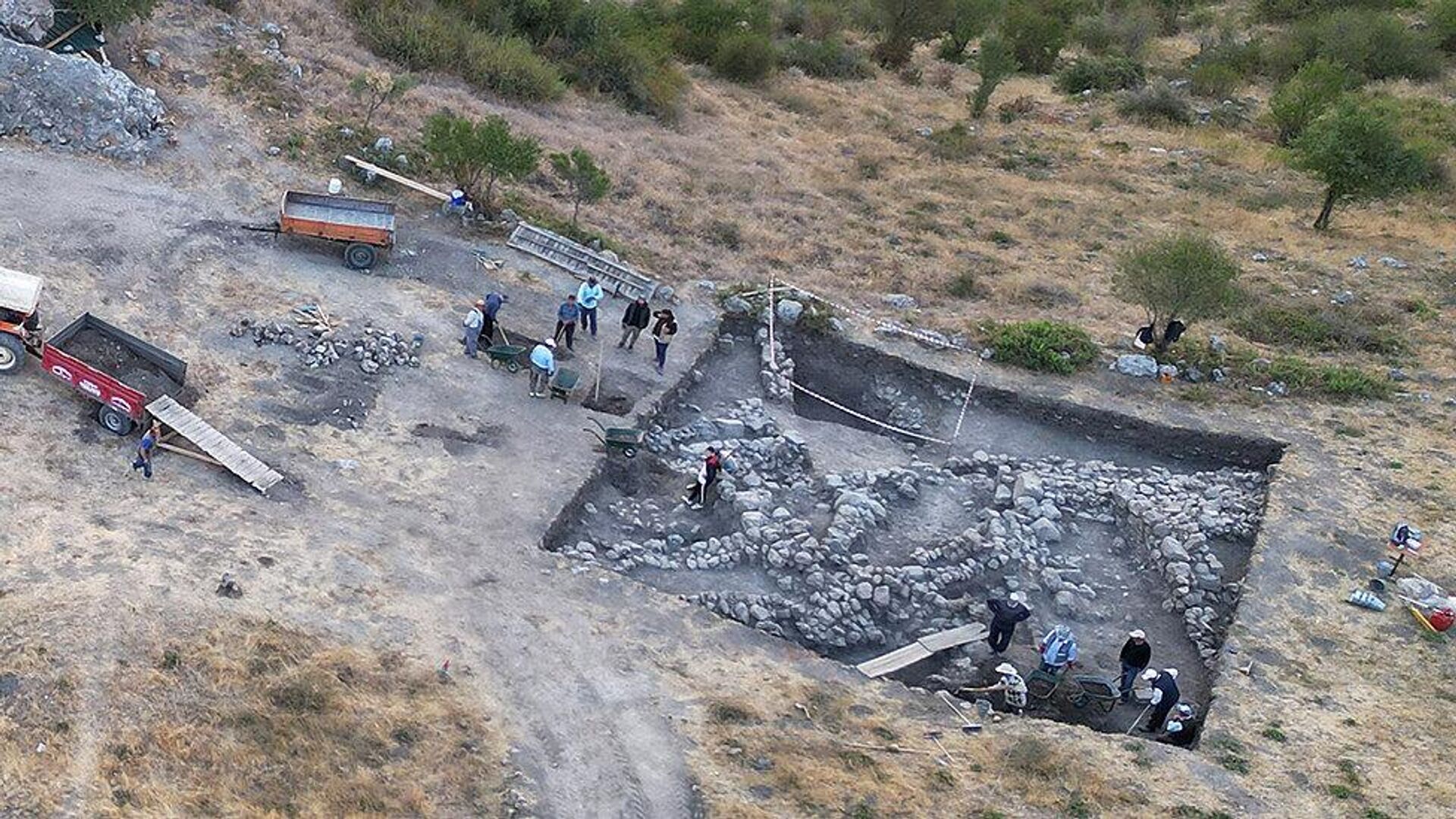https://en.sputniknews.africa/20230923/tablets-unearthed-in-turkey-reveal-previously-unknown-indo-european-language-1062294198.html
Tablets Unearthed in Turkey Reveal Previously Unknown Indo-European Language
Tablets Unearthed in Turkey Reveal Previously Unknown Indo-European Language
Sputnik Africa
The script is still being deciphered, and scholars expect it to yield valuable insights into Anatolia's rich late Bronze Age linguistic history. 23.09.2023, Sputnik Africa
2023-09-23T06:06+0200
2023-09-23T06:06+0200
2024-04-25T10:22+0200
turkey (turkiye)
language
archeology
middle east
history
https://cdn1.img.sputniknews.africa/img/07e7/09/17/1062294377_304:0:1280:549_1920x0_80_0_0_62d672e4f9dd123b9b6153bc54ad109d.jpg
An astonishing discovery has emerged from the ongoing excavation efforts at the UNESCO World Heritage Site, Bogazkoy-Hattusha, in north-central Turkey. This historical site, once the capital of the formidable Hittite Empire during the Late Bronze Age, has been a treasure trove of ancient artifacts for over a century. However, this year's excavation has unveiled an unexpected find – a previously unknown Indo-European language.Professor Daniel Schwemer, a renowned expert in the ancient Near East, has taken a lead role in investigating this remarkable discovery. The language, tentatively referred to as the "Kalasma language," was stumbled upon within a Hittite ritual text at the excavation site.Though the Kalasmaic text remains largely incomprehensible due to its recent discovery, Elisabeth Rieken, a professor of Marburg University and specialist in ancient Anatolian languages, has identified it as belonging to the Anatolian-Indo-European language family.Notably, despite its geographic proximity to Palaic-speaking regions, the Kalasma language appears to share more linguistic features with Luwian, raising intriguing questions about its precise classification.
https://en.sputniknews.africa/20230917/egypt-opens-newly-restored-ottoman-era-mosque-1062176319.html
turkey (turkiye)
middle east
Sputnik Africa
feedback@sputniknews.com
+74956456601
MIA „Rossiya Segodnya“
2023
News
en_EN
Sputnik Africa
feedback@sputniknews.com
+74956456601
MIA „Rossiya Segodnya“
Sputnik Africa
feedback@sputniknews.com
+74956456601
MIA „Rossiya Segodnya“
turkey (turkiye), language, archeology, middle east, history
turkey (turkiye), language, archeology, middle east, history
Tablets Unearthed in Turkey Reveal Previously Unknown Indo-European Language
06:06 23.09.2023 (Updated: 10:22 25.04.2024) The script is still being deciphered, and scholars expect it to yield valuable insights into Anatolia's rich late Bronze Age linguistic history.
An astonishing discovery has emerged from the ongoing excavation efforts at the UNESCO World Heritage Site, Bogazkoy-Hattusha, in
north-central Turkey.
This historical site, once the capital of the formidable Hittite Empire during the Late Bronze Age, has been a treasure trove of ancient artifacts for over a century. However, this year's excavation has unveiled an unexpected find – a previously unknown Indo-European language.
Professor Daniel Schwemer, a renowned expert in the ancient Near East, has taken a lead role in investigating this remarkable discovery. The language, tentatively referred to as the "Kalasma language," was stumbled upon within a Hittite ritual text at the excavation site.
The Hittite Empire, known for its fascination with recording rituals in foreign languages, left behind an intricate linguistic tapestry that sheds light on the diverse linguistic landscapes of Late Bronze Age Anatolia.
Though the Kalasmaic text remains largely incomprehensible due to its recent discovery, Elisabeth Rieken, a professor of Marburg University and specialist in ancient Anatolian
languages, has identified it as belonging to the Anatolian-Indo-European language family.
Bogazkoy-Hattusha's vast archives have already yielded texts in Luwian and Palaic, two Anatolian-Indo-European languages closely related to Hittite, as well as Hattic, a non-Indo-European language. Now, the enigmatic Kalasma language joins this linguistic mosaic.
Notably, despite its geographic proximity to Palaic-speaking regions, the Kalasma language appears to share more linguistic features with Luwian, raising intriguing questions about its precise classification.


